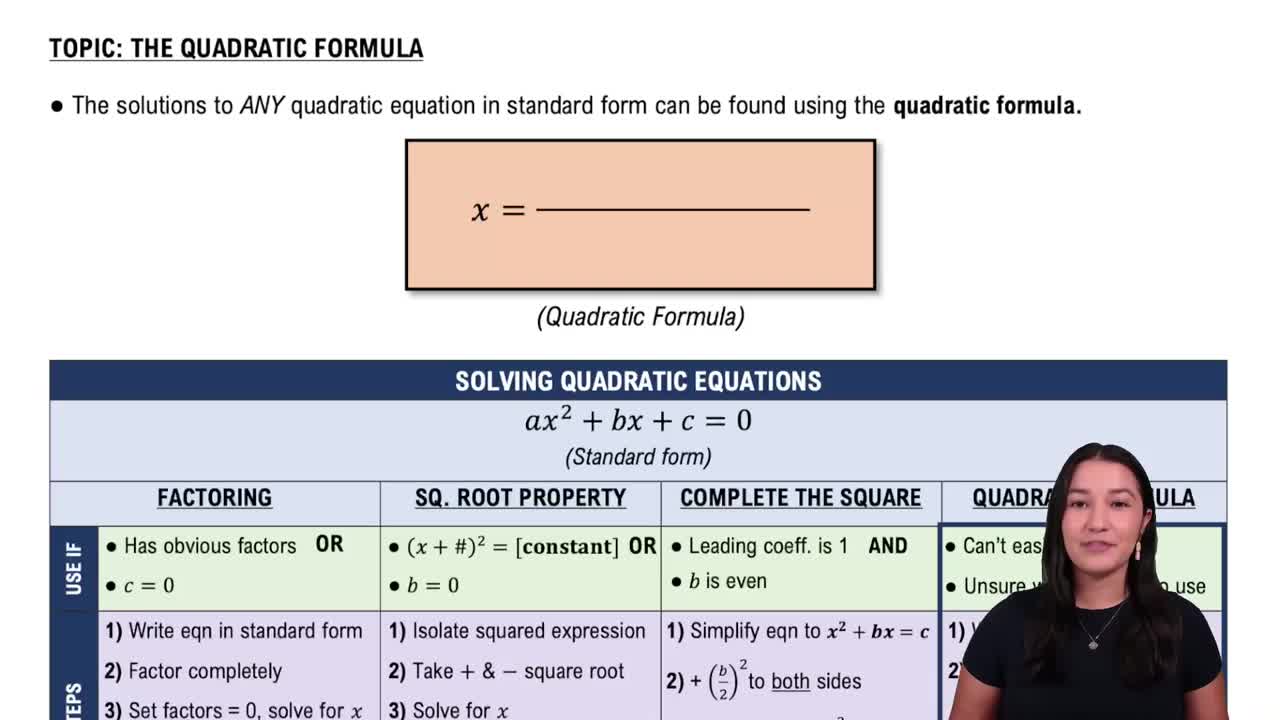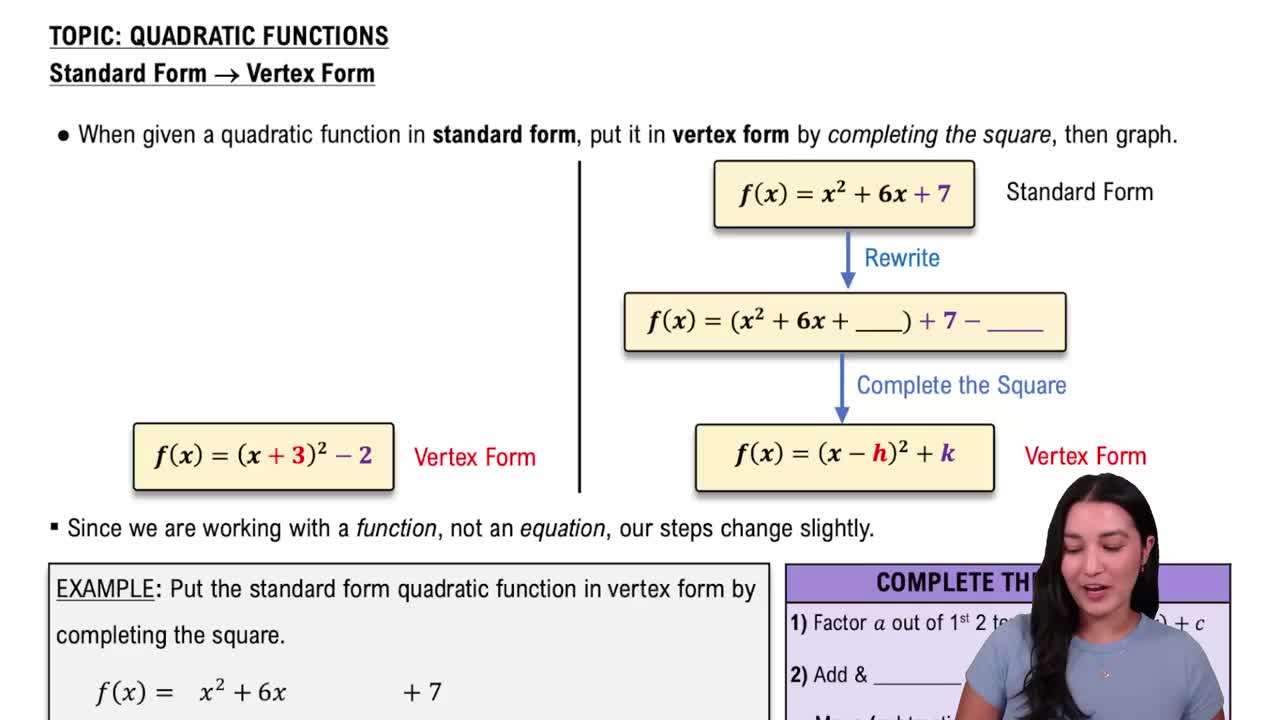Table of contents
- 0. Review of Algebra4h 16m
- 1. Equations & Inequalities3h 18m
- 2. Graphs of Equations43m
- 3. Functions2h 17m
- 4. Polynomial Functions1h 44m
- 5. Rational Functions1h 23m
- 6. Exponential & Logarithmic Functions2h 28m
- 7. Systems of Equations & Matrices4h 6m
- 8. Conic Sections2h 23m
- 9. Sequences, Series, & Induction1h 19m
- 10. Combinatorics & Probability1h 45m
4. Polynomial Functions
Quadratic Functions
Problem 1a
Textbook Question
Textbook QuestionIn Exercises 1–4, the graph of a quadratic function is given. Write the function's equation, selecting from the following options. 
 Verified Solution
Verified SolutionThis video solution was recommended by our tutors as helpful for the problem above
Video duration:
5mPlay a video:
Was this helpful?
Key Concepts
Here are the essential concepts you must grasp in order to answer the question correctly.
Quadratic Functions
A quadratic function is a polynomial function of degree two, typically expressed in the form f(x) = ax² + bx + c, where a, b, and c are constants. The graph of a quadratic function is a parabola, which can open upwards or downwards depending on the sign of 'a'. Understanding the general shape and properties of parabolas is essential for analyzing their equations.
Recommended video:

Solving Quadratic Equations Using The Quadratic Formula
Vertex of a Parabola
The vertex of a parabola is the highest or lowest point on its graph, depending on whether it opens downwards or upwards. For a quadratic function in vertex form, f(x) = a(x-h)² + k, the vertex is located at the point (h, k). In the given graph, the vertex is at (1/2, 2), which is crucial for writing the function's equation accurately.
Recommended video:

Horizontal Parabolas
Y-Intercept
The y-intercept of a function is the point where the graph intersects the y-axis, which occurs when x = 0. For quadratic functions, the y-intercept can be found by evaluating the function at x = 0, yielding the value of 'c' in the standard form f(x) = ax² + bx + c. In this case, the y-intercept is at (0, 3), providing a key point for determining the function's equation.
Recommended video:
Guided course

Graphing Intercepts

 7:42m
7:42mWatch next
Master Properties of Parabolas with a bite sized video explanation from Callie
Start learningRelated Videos
Related Practice













